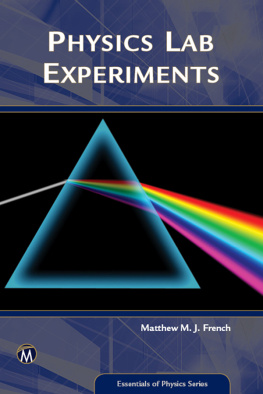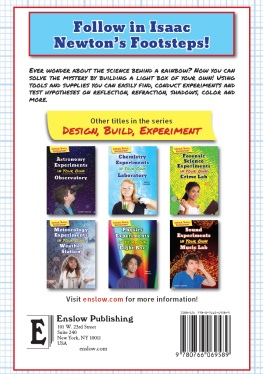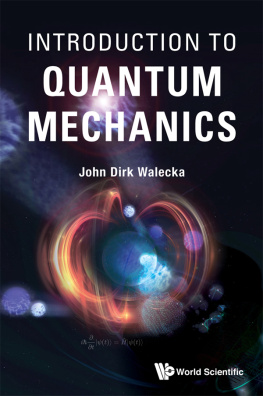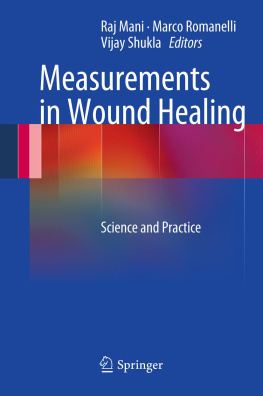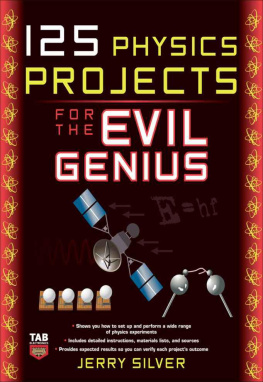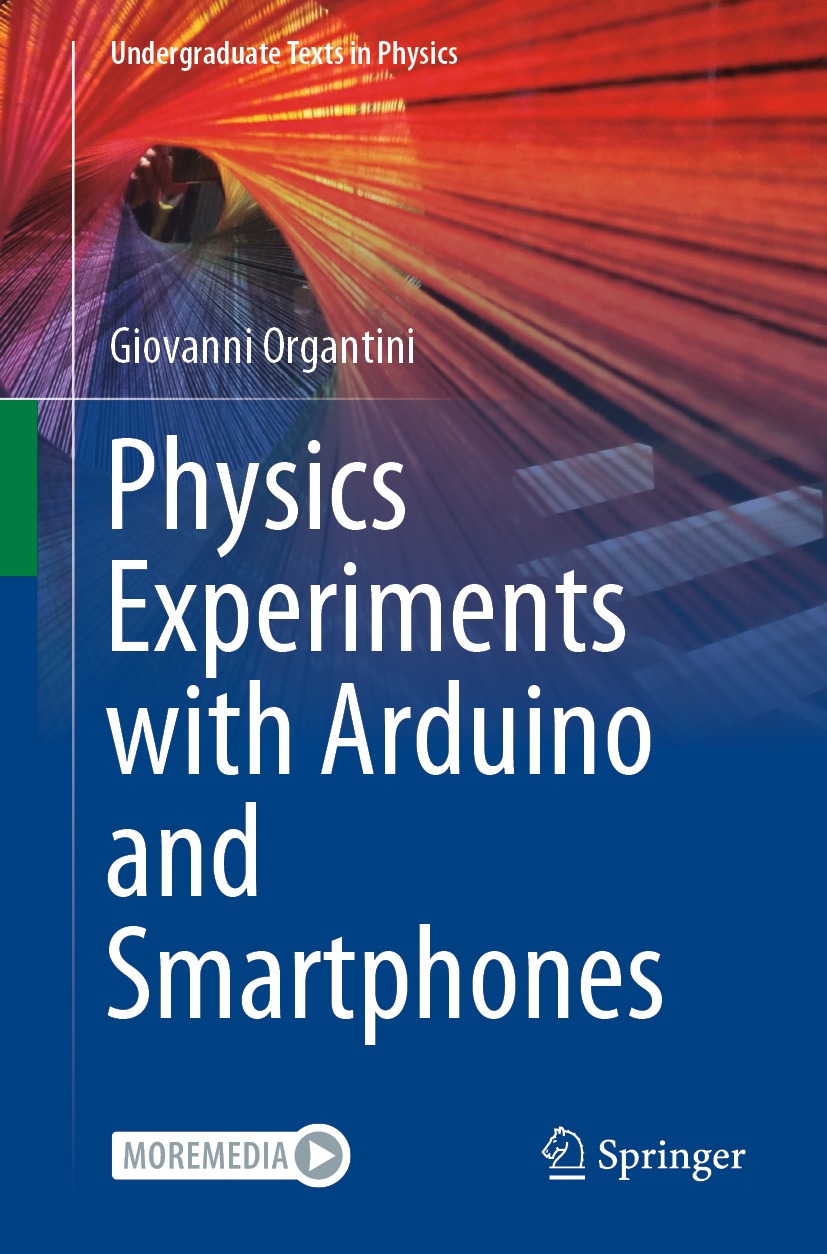Undergraduate Texts in Physics
Series Editors
Kurt H. Becker
NYU Polytechnic School of Engineering, Brooklyn, NY, USA
Jean-Marc Di Meglio
Matire et Systmes Complexes, Universit Paris Diderot, Btiment Condorcet, Paris, France
Sadri D. Hassani
Department of Physics, Loomis Laboratory, University of Illinois at Urbana-Champaign, Urbana, IL, USA
Morten Hjorth-Jensen
Department of Physics, Blindern, University of Oslo, Oslo, Norway
Michael Inglis
Patchogue, NY, USA
Bill Munro
NTT Basic Research Laboratories, Optical Science Laboratories, Atsugi, Kanagawa, Japan
Susan Scott
Department of Quantum Science, Australian National University, Acton, ACT, Australia
Martin Stutzmann
Walter Schottky Institute, Technical University of Munich, Garching, Bayern, Germany
Undergraduate Texts in Physics (UTP) publishes authoritative texts covering topics encountered in a physics undergraduate syllabus. Each title in the series is suitable as an adopted text for undergraduate courses, typically containing practice problems, worked examples, chapter summaries, and suggestions for further reading. UTP titles should provide an exceptionally clear and concise treatment of a subject at undergraduate level, usually based on a successful lecture course. Core and elective subjects are considered for inclusion in UTP.
UTP books will be ideal candidates for course adoption, providing lecturers with a firm basis for development of lecture series, and students with an essential reference for their studies and beyond.
More information about this series at http://www.springer.com/series/15593
Giovanni Organtini
Physics Experiments with Arduino and Smartphones
1st ed. 2021

Logo of the publisher
Giovanni Organtini
Sapienza Universit di Roma, Rome, Italy
ISSN 2510-411X e-ISSN 2510-4128
Undergraduate Texts in Physics
ISBN 978-3-030-65139-8 e-ISBN 978-3-030-65140-4
https://doi.org/10.1007/978-3-030-65140-4
The Editor(s) (if applicable) and The Author(s), under exclusive license to Springer Nature Switzerland AG 2021
This work is subject to copyright. All rights are solely and exclusively licensed by the Publisher, whether the whole or part of the material is concerned, specifically the rights of translation, reprinting, reuse of illustrations, recitation, broadcasting, reproduction on microfilms or in any other physical way, and transmission or information storage and retrieval, electronic adaptation, computer software, or by similar or dissimilar methodology now known or hereafter developed.
The use of general descriptive names, registered names, trademarks, service marks, etc. in this publication does not imply, even in the absence of a specific statement, that such names are exempt from the relevant protective laws and regulations and therefore free for general use.
The publisher, the authors and the editors are safe to assume that the advice and information in this book are believed to be true and accurate at the date of publication. Neither the publisher nor the authors or the editors give a warranty, expressed or implied, with respect to the material contained herein or for any errors or omissions that may have been made. The publisher remains neutral with regard to jurisdictional claims in published maps and institutional affiliations.
Cover by Massimo Buniy, Gabriele DAndreta and Alessio Ria: Across the Black Hole Artwork made for the Art & Science Across Italy programme: a European project of the CREATIONS network (H2020) organised by INFN and CERN to promote scientific culture among young people, combining the languages of art and science. Thanks to Prof. Georgia Conti.
This Springer imprint is published by the registered company Springer Nature Switzerland AG
The registered company address is: Gewerbestrasse 11, 6330 Cham, Switzerland
Preface
I have been dreaming about writing this textbook for years. Finally, in late 2019, before the COVID-19 pandemic exploded, I met a far-sighted publisher who agreed to print it. I wrote three chapters of this book while Italy was in lockdown and courses at our University had been switched to remote learning, to the obvious detriment of laboratory courses. I was then asked to provide some help as to how these remote courses might be carried out and I came up with a few ideas that were met with scepticism at the beginning but indeed, resulted in complete success. Students were, in fact, learning even more than they might have with traditional courses. The reason, in my opinion, is simple: conducting experiments by yourself (by which I mean assembling all that is needed to perform the experiment, organising data collection and analysing the results through the creation of your own code) teaches a student much much more than they are likely to learn simply by pushing buttons to start an automatic device prepared by a teacher. Moreover, classical physics laboratory courses suffer from the misguided notion that the purpose of the experiments to be proposed to students is to see how closely they can follow the lecture material and imitate original equipment in their own constructions, thus making experiments look quite old-fashioned.
On the contrary, the purpose of laboratory courses should be to teach students how to design and conduct an experiment, interpret data and derive models. These skills must be developed using modern tools, in both hardware and software domains, such that students are prepared for practice in modern physics laboratories.
The idea behind this textbook is that laboratory practice is learnt by doing and is much less formal than theoretical physics courses. Often, the emphasis in these courses is on statistics, and they are full of mathematics that seldom catches the attention of students devoted to experimental physics. The main goal of the proposed experiments is to prove that a physical law is correct, but given that most of the physical laws can be formulated within a framework in which many approximations are done implicitly, this goal is rarely achieved. As a result, students get frustrated and lose confidence in their experimental abilities. Finally, in many cases, operations are tedious (repeat the same measurement many times over, compute complicated derivatives and solve difficult equations or systems of equations, etc.), without even the benefit of being useful for the development of the competencies. None of us compute averages or uncertainties about measurements using the techniques adopted in university courses. We rather use automatic computation, having learnt a programming language. Thats why computer programming is taught in physics courses. However, too often, computers are not used in laboratory courses to derive results, in the mistaken belief that doing math manually is the only way to learn and that writing computer programs is a waste of time.
My textbook is thus organised such that the knowledge is acquired progressively, increasing from chapter to chapter, sometimes overriding (or, more accurately updating) the knowledge acquired up to a given point. Different topics (experiment design, data acquisition, statistical data analysis and their interpretation) are not discussed in dedicated chapters but are mixed in with an introduction to a modern programming language such as Python and complemented by a relatively detailed description of Arduino programming.


